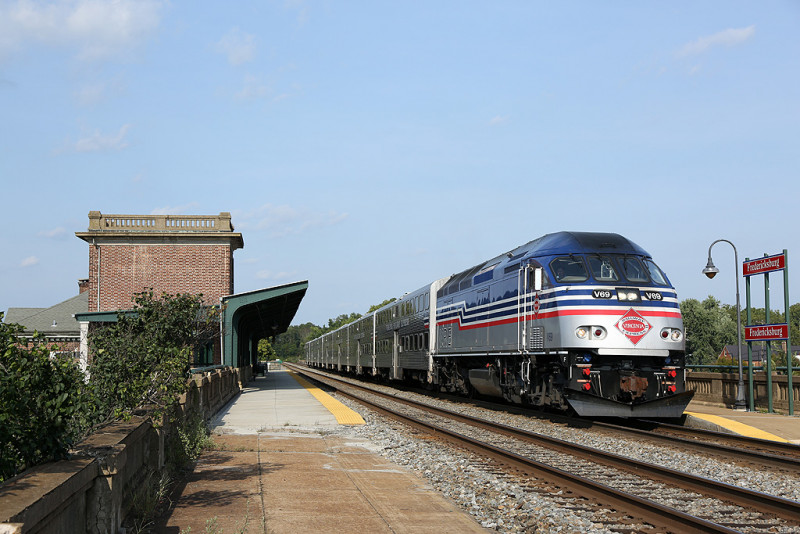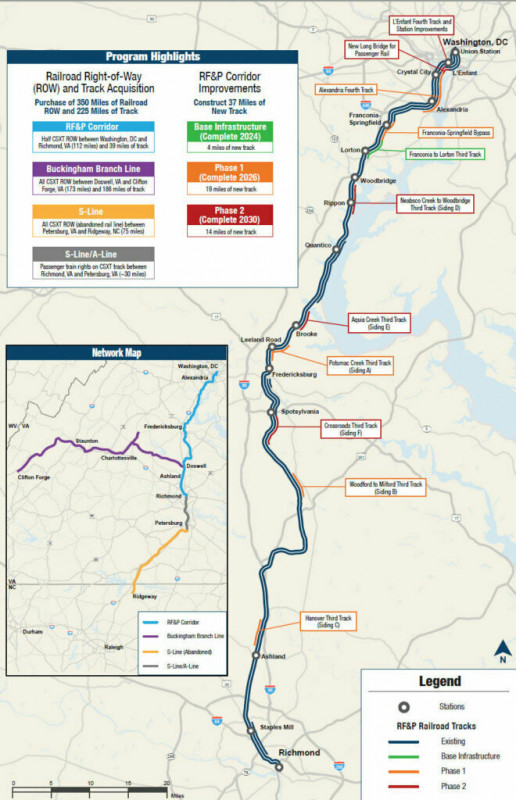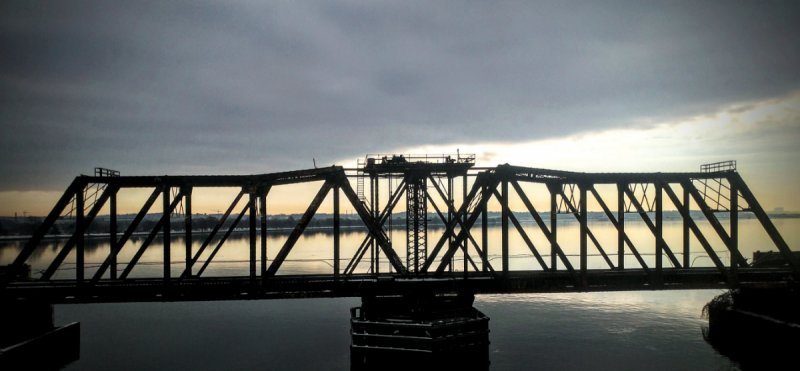Virginia’s big buy-in on rail could transform regional mobility

VRE train by Virginia Railway Express.
“We cannot pave our way out of congestion.” With that declaration, Virginia Governor Ralph Northam announced a historic 3.7 billion dollar rail deal with CSX on Thursday that will allow the Commonwealth to vastly expand Amtrak and Virginia Railway Express (VRE) service over the next decade.
In the deal, Virginia acquired 225 miles of track and purchased the right of way to a further 350 miles of CSX-owned railroad. Northam also announced funding for the construction of 37 miles of new track to remove rail capacity chokepoints between Richmond and Washington, DC.
The list of projects that will be unlocked thanks to this deal reads like a rail enthusiast’s wish list: VRE service will expand by 75% and add in weekend operations, direct train connections between DC and Richmond will become a nearly hourly affair, VRE and MARC trains will have access to each other’s networks for the first time, high-speed rail to Raleigh is now possible, and planning for a mooted “Commonwealth Corridor”—linking the Blue Ridge Mountains and Hampton Roads by rail—can begin.
Here's what the proposed passenger rail network could look like under Northam's deal. Image by Virginia Department of Rail and Public Transportation.
The deal will address the Long bridge chokepoint
Currently, all DC-bound trains from Virginia have to pass over the Long Bridge, a 110-year-old rail crossing privately owned by CSX which spans the Potomac River between DC and Arlington. If the Long Bridge were to fail, the next closest north-south rail connection passes through Harper’s Ferry, West Virginia. The critical nature of this connection across the Potomac means the Long Bridge is already at 98% capacity and thus unable to accommodate any additions to passenger rail service.
With a lack of other northward rail crossings, any expansions of Amtrak and VRE service have been on hold. Northam’s announcement will double the Long Bridge’s capacity and create separate dedicated freight and passenger tracks by 2030.
The deal will also provide more freight rail capacity going northward, further fueling the rapid growth of the Port of Virginia in Norfolk, the deepest harbor on the Eastern Seaboard. This unprecedented deal means all rail connections (passenger, commuter, and freight) between the Commonwealth and the District are getting the green light for long-term expansion.
Even more critical to the future of rail in Virginia, the state will now own the Long Bridge in full. Under CSX’s exclusive ownership state officials were essentially forced to bribe the company with rail improvements in return for each additional Amtrak or VRE train the Department of Rail and Public Transportation (DRPT) wanted to run. In a September interview, DRPT head Jennifer Mitchell underscored that, “the Long Bridge is the connection between the entire Northeast and Southeast rail corridors. This is a project with national implications and impact.”
Long Bridge, a key chokepoint for rail in the region, will expand its capacity under the new deal. Image by Rex Block used with permission.
The 3.7 billion dollar price tag may sound steep, but Virginia’s alternate plan to widen I-95 by just one lane would have cost taxpayers an estimated $12 billion. Those familiar with highway expansion projects will already be aware that those estimates tend to double, triple, and even quadruple once construction is already underway.
Under Northam’s deal, Amtrak will also chip into the Commonwealth’s huge rail investment. By investing in interstate connectivity, the governor’s administration believes this deal will unlock two billion dollars worth of economic growth in Virginia.
Rail advocates are thrilled
At Thursday’s announcement in Crystal City, the governor hailed the deal with CSX as “a once in a generation opportunity to make the rail system work better for everyone in Virginia and the whole East Coast.” Many industry and business leaders agree. One of the deal’s key backers is the Greater Washington Partnership (GWP), a civic alliance that began rallying support for rail investment with its “Blueprint for Regional Mobility.”
In a statement immediately following Northam’s announcement, the co-chairs of the GWP’s Regional Mobility Initiative called the deal “one of the biggest achievements for passenger rail in the United States since Amtrak was created almost 50 years ago.” Joe McAndrew, the GWP’s Director of Transportation Policy, similarly feted the deal.
“Within a decade, Capital Region residents will be able to take a train on the hour, every hour to Richmond and beyond. This is an unprecedented step that will bind Maryland, DC, and Virginia together for many years to come,” McAndrew said in an interview right after the announcement.
Given the level of excitement on display yesterday, it’s hard to believe that Virginia begin to pay for rail service in the state only 10 years ago. Mary Hughes Hynes, the Northern Virginia District representative on the Commonwealth Transportation Board, believes the deal struck between Northam’s administration, CSX, and Amtrak will be a game-changer.
When reached for an interview yesterday evening, Hynes could hardly contain her excitement: “This will bring congestion relief to NoVA and open up freight and passenger rail options all along the Eastern Seaboard. Innovative transportation solutions continue to guide Virginia’s future!”
